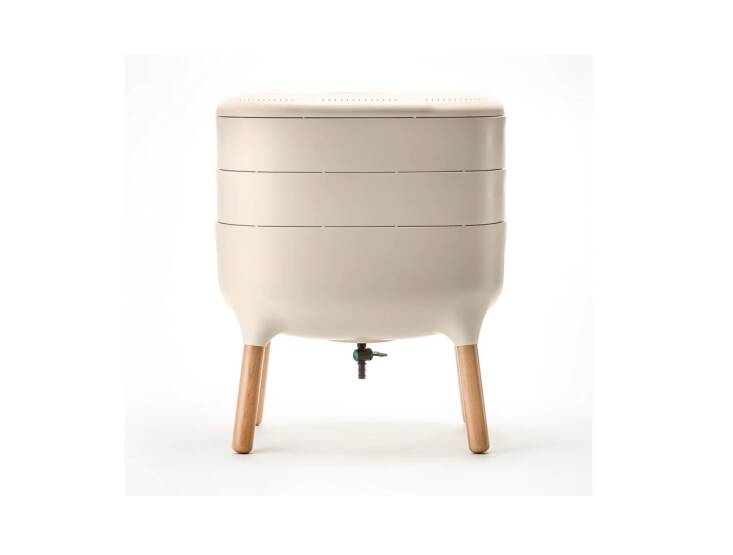Composting is a win-win. For one, you’re reducing waste at the landfill. According to the EPA, landfills are the biggest source of methane, a powerful greenhouse gas more potent than carbon dioxide in contributing to global warming. You’re also creating a beneficial, nutrient-rich soil additive for your garden out of trash.
Mix compost into soil blends, use it to feed lawns, and top dress beds with it. When making compost, be sure to incorporate more brown ingredients (wood chips, dried leaves, paper, and cardboard) than green ones (fruit and vegetables scraps and garden clippings) to keep the pile fresh. Add water so it stays damp, and turn it occasionally to add oxygen to hasten the process. Then let nature do its thing.
While you don’t need a bin or container to make compost (a simple pile will do), using one keeps things neater, deters critters from making a mess, and can even speed up the breakdown. Here are five types of composters, each with different features, to consider:
Hot Composting

I first heard about the Green Johanna from Edwina von Gal, garden designer and founder of the Perfect Earth Project, where I work. She’s been using it for years and swears by it. The Green Johanna is an insulated hot composter system, made with recycled plastic and developed in Sweden, that works faster than other bins. (It takes just four to six months to create compost, as opposed to a year or two for traditional composters.) The Green Johanna features a patented ventilation system that allows for oxygen flow, is critter-resistant, and comes with an aerator tool to turn the compost. If you live in a cold climate, you can purchase an insulation jacket to use in winter when temperatures dip below 40 degrees. Bonus: Cooked food scraps are allowed in hot bins.
Tumble Composting

The more you aerate your compost pile, the faster the results. Tumbler-style composters make it easier to turn the contents. Made from galvanized steel, the Jora Composter is insulated so that temperatures can reach 160 degrees. It also features locking twin chambers so you can let one side cook, while adding fresh ingredients to the other.
No-Frills Composting

For those looking for a plastic-free basic option, Gardener’s Supply Cedar Compost Bin fits the bill. It is made from slats of rot-resistant cedar, which allow for rain and airflow, aluminum corners, and zinc latches and handles. The bottom access panel locks to prevent animals from getting in easily.
Leaf Composting

This year I plan to make leaf mold, a beneficial soil additive and mulch. This Steel Compost Bin will keep fallen leaves contained, but keep them exposed to the elements, which will help the decomposition process. To speed things along, I plan to mulch mow the dried leaves before adding them to the pile. In a year or so, I’ll be able to use the leaf mold for mulch on my vegetable beds and as a soil additive.
Worm Composting

I’ve also been eyeing worm farms for a while now. I live in an apartment, though, with no outdoor space, so the vericomposter I get has to be attractive. Urbalive Worm Farm fits the bill—you’d never know that hiding inside the chic exterior is a slew of tiny garbage disposals. Hungry worms (like red wrigglers) make quick work of fruit and vegetable scraps, garden waste, cardboard, and paper. It’s ideal for apartments where you can’t compost outdoors.
See also:
- 10 Things Nobody Tells You About Compost
- 10 Easy Pieces: Wood Compost Bins
- 10 Easy Pieces: Compost Turners
















Have a Question or Comment About This Post?
Join the conversation (0)